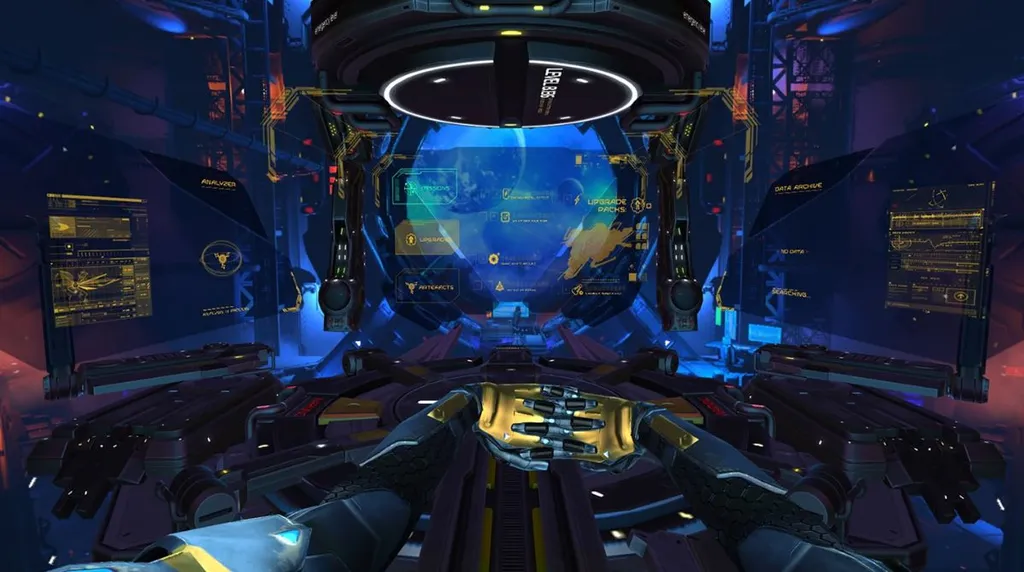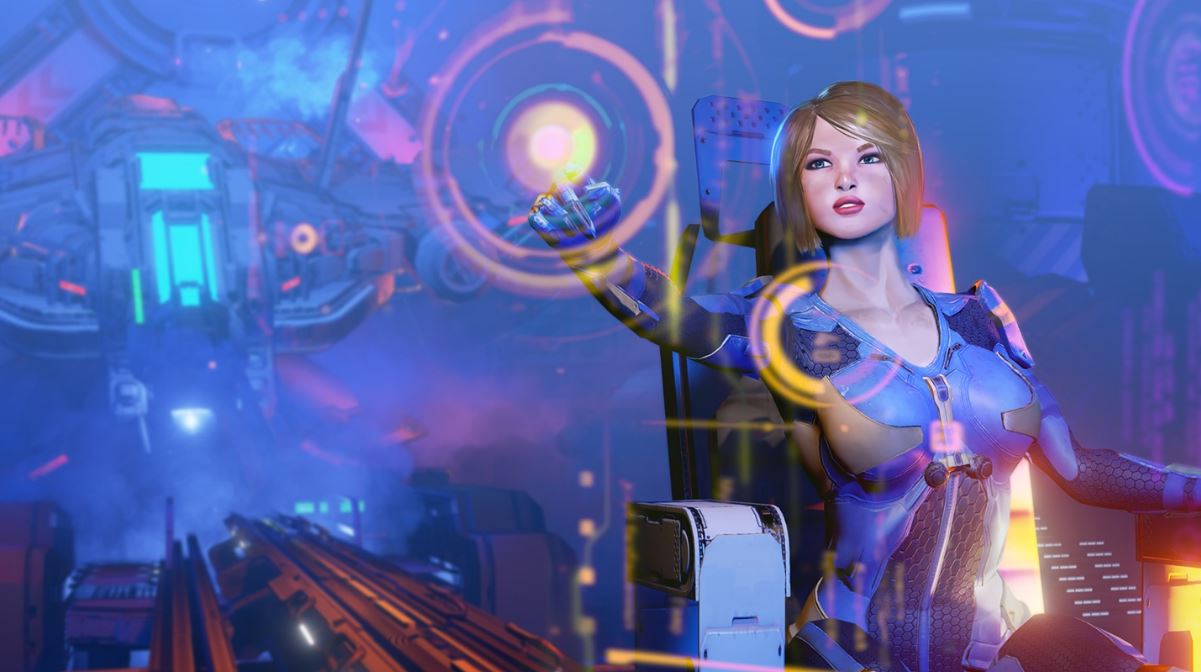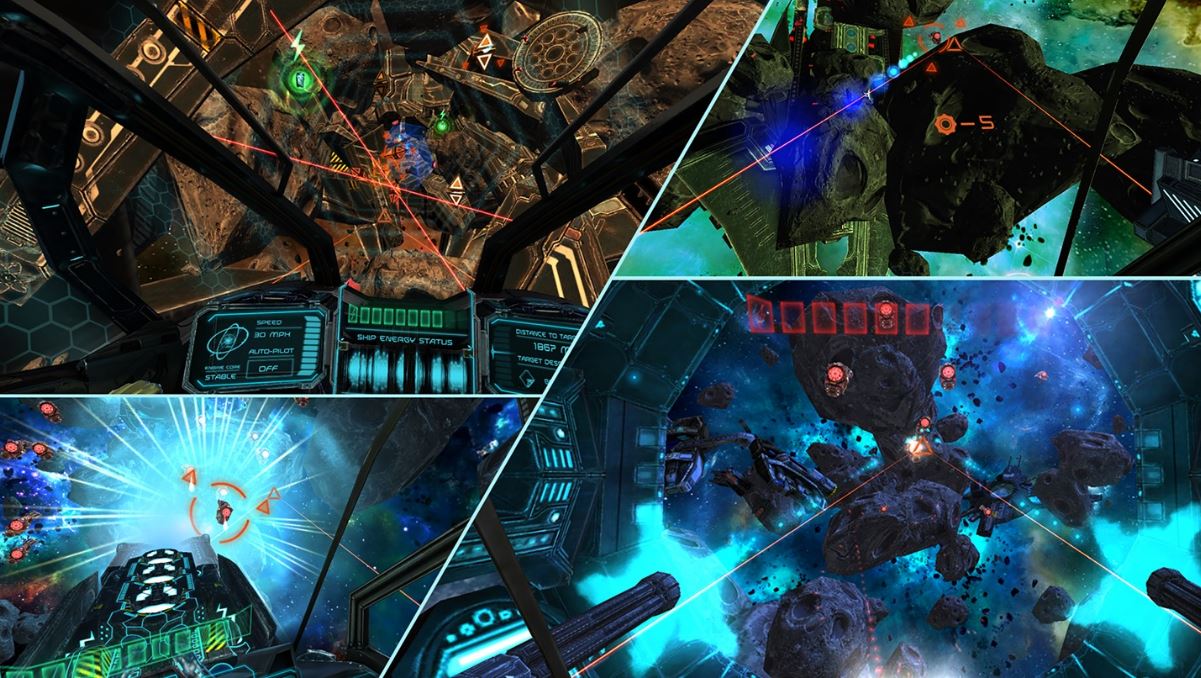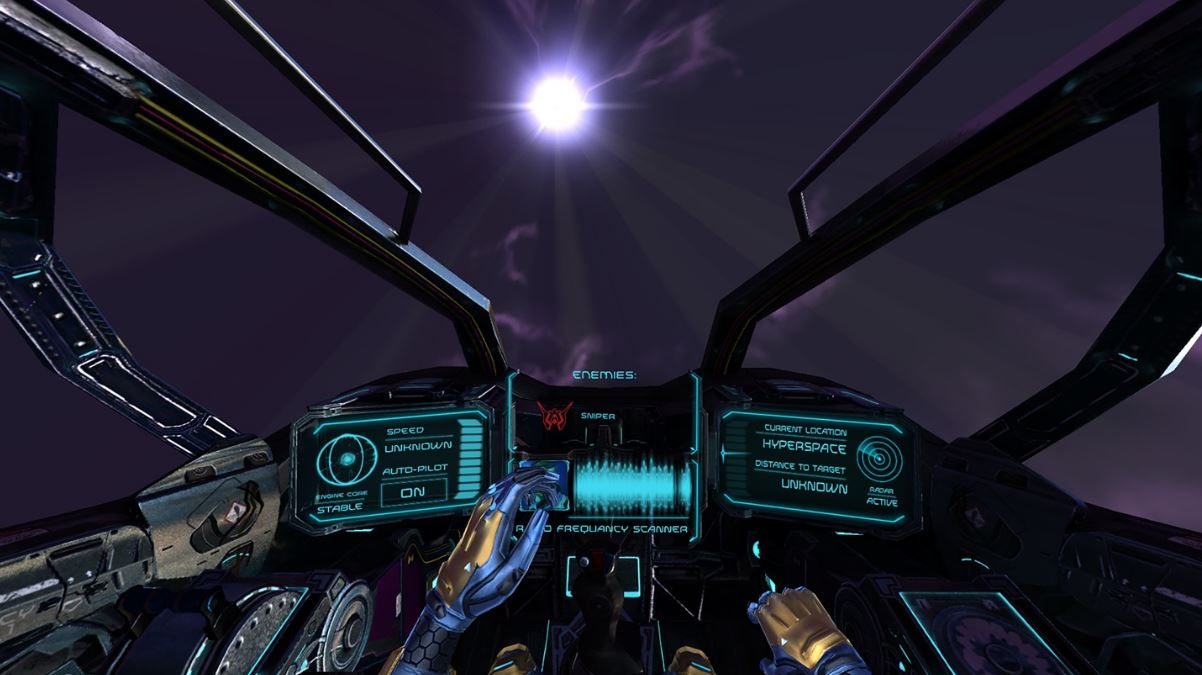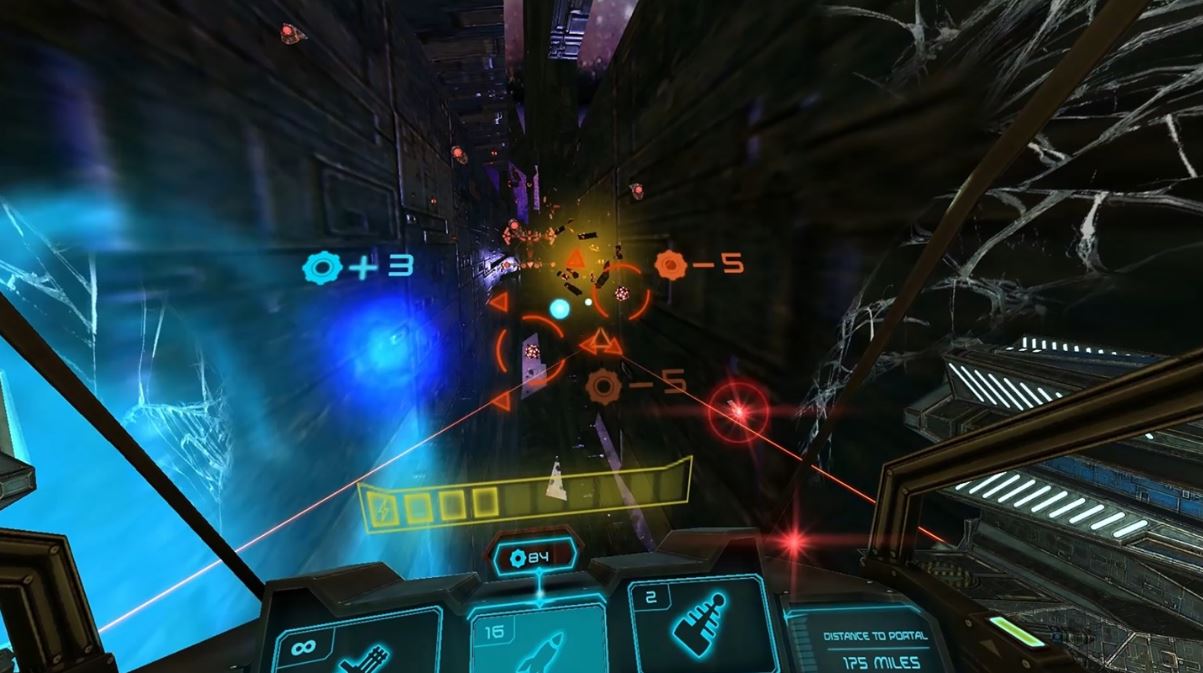Because you can apparently never have too many VR space shooters, here’s another one! Space Stalker actually fares pretty well overall if you get past the promotional screenshots that seem to accentuate the assets of the extremely fit woman pilot you play in the game as much as the actual game itself. Honestly, I get that it’s hard to differentiate your app in the overcrowded app store, but really?
In reality, Space Stalker is a bit distinct for several different reasons.
The levels move between straight up rail shooting targeting sequences and flying and shooting bits with more control. It’s an interesting mix of styles, but mostly amounts to shooting things all the time. Even when you can steer your nimble fighter around, it’s still within a confined area, which is likely an attempt to prevent overt motion sickness across different VR platforms (the game is both in the Gear VR store and on the general Google Play store for Cardboard and, presumably, Daydream).
Russian developer, Fibrum, has done a commendable job of creating a nice sense of space even within the confined levels. The missions are visually broken up with things like giant asteroids and even structures, which helps keep the flying interesting, but also serves as a technical way to keep the focus on things closer to you. There’s a decent sense of depth to the view as well.
Overall, Space Stalker looks quite good too. Ship design is interesting, the asteroids and other sights are detailed, and your cockpit is cool looking. You can even look down and see your character’s body, which bears more than a passing resemblance to the woman pilot in EVE: Valkyrie.
Space Stalker doesn’t require a control pad, but does support and recommend one. Oddly, I enjoyed just using my head to fly around and aim, tapping the side touch panel to unleash righteous fury on evil space trash. Swiping up reloads, swiping right switches weapons. Head tracking is absolutely the preferred way to play the on-rails segments of the levels, where our stalwart space character slides over the gunner chair of her ship and has a variety of guns and rockets at her disposal.
Aiming simply by looking at a ship remains an entertainment gimmick in VR, because it’s a control style that makes sense. Things get a little more dicey when playing in the bits where you actively control the ship. Here, the ship and the aiming reticle move wherever you look, so aiming and dodging at the same time becomes rather difficult.
This is especially a problem in crowded asteroid fields (and other obstacle-filled environments), since not hitting the large indestructible rock things is paramount to survival. And since enemies seldom line up to make sure you can kill them and duck through gaps, you have to choose to either aim or evade. Obviously, a control pad makes such situations far easier to deal with, but playing without one certainly isn’t impossible.
Space Stalker definitely fits the bill and checks all the boxes for a decent VR space shooter, but I’m starting to lose track of games that match that description. The action is solid enough though to make this particular shooter worth a look over several others we’ve seen lately. That said, this is clearly a more ‘arcade’ style shooter. The levels are linear, much of the game is played entirely on rails, and there isn’t much variety in how the game plays overall.
Space Stalker does it’s thing well enough, but without much fanfare. The head tracking controls work nicely and are fun, everything looks pretty good, and it’s not a bad excursion into VR space. But there are so many options in this genre, it’s difficult to escape the noise. You’ll likely have some fun with it, just don’t expect much depth.
You can access Space Stalker on Gear VR through the Oculus Home store now, for $6.99. Read our Game Review Guidelines for more information on how we arrived at this score.

